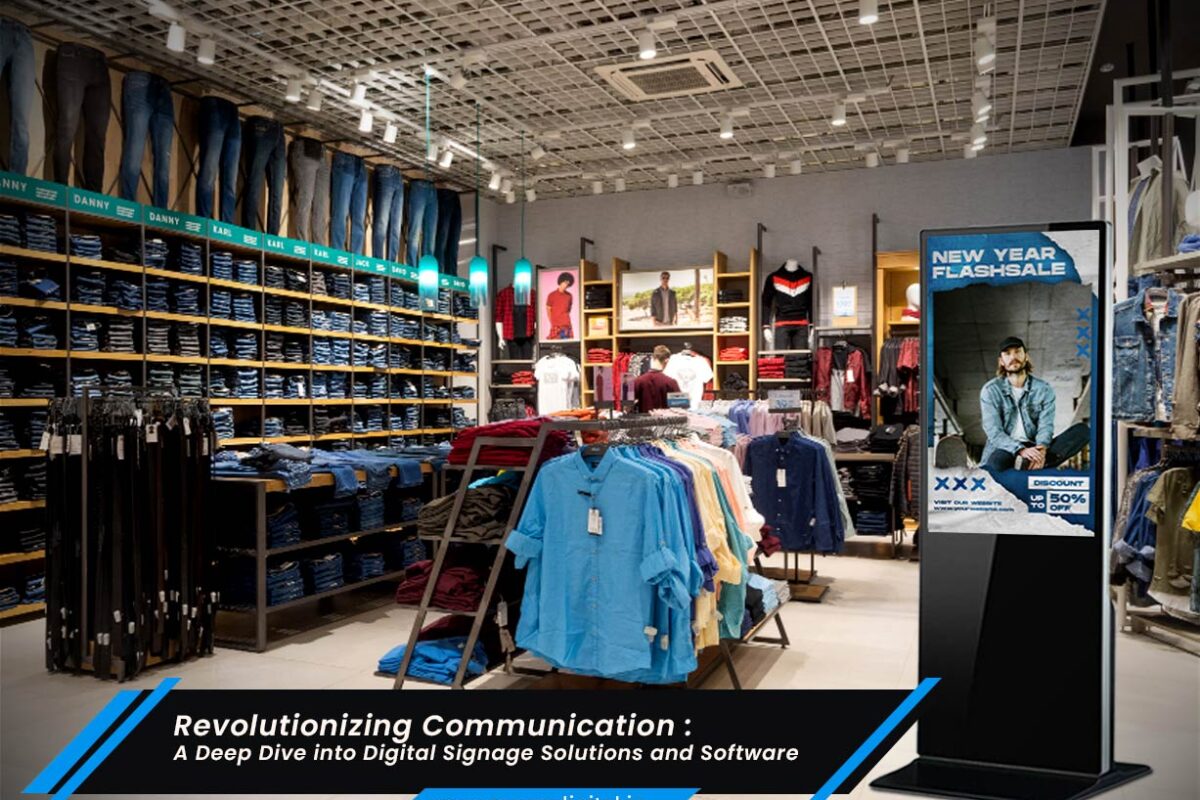In an age dominated by digital innovation, traditional methods of visual communication have undergone a remarkable transformation. One notable evolution in this realm is the advent of digital standees and frame standees. This blog aims to provide an extensive exploration of these technologies, delving into their origins, key features, applications across various industries, and the potential future trends that might shape their continued development.
Understanding Digital Standee and A Frame Standee
Digital standees and a frame standees represent a modernized approach to visual communication, combining the effectiveness of traditional standees with the dynamic capabilities of digital displays. A digital standee typically features a high-resolution screen integrated into a freestanding structure, while a frame standee often includes a digital display within a sleek frame, making it an ideal choice for spaces with limited floor area.
These innovative solutions have found their place in diverse environments, from retail spaces to corporate settings, offering a versatile platform for conveying information, promoting products, and enhancing brand visibility.
Evolution of Digital Standee and Frame Standee
The evolution of digital standees and frame standees can be traced back to the growing demand for more engaging and dynamic visual displays. Traditional static standees were effective, but the need for real-time updates, interactive content, and eye-catching visuals led to the integration of digital technologies.
Early implementations saw the introduction of basic LCD displays, providing a shift from static images to simple video loops. However, with advancements in display technology, the industry witnessed the adoption of high-definition screens, interactive touch capabilities, and even features such as augmented reality (AR) and virtual reality (VR) to elevate the user experience.
Key Features of Digital Standee and Frame Standee
- High-Resolution Displays: Modern digital standees and frame standees boast high-resolution displays, ensuring crisp and vibrant visuals that captivate the audience.
- Interactive Touchscreens: Many digital standees are equipped with interactive touchscreens, allowing users to engage with content, navigate through information, and access additional details.
- Remote Content Management: Cloud-based solutions enable remote content management, allowing users to update information, change visuals, and schedule content without physically interacting with the standee.
- Versatility in Content: Digital standees support various content formats, including images, videos, animations, and dynamic information feeds. This versatility allows for creative and engaging displays tailored to specific audiences and contexts.
- Sleek Design: Frame standees, in particular, emphasize a sleek and minimalistic design. The combination of a thin frame and a digital display creates a modern aesthetic that seamlessly integrates into diverse environments.
Real-Time Updates: Digital standees allow businesses to deliver real-time updates and information to their audience. Whether it’s promoting a flash sale, announcing an event, or providing the latest news, digital standees enable instant content updates without the need for physical replacements.
Eye-Catching Visuals: Digital standees leverage high-resolution displays, ensuring vibrant and eye-catching visuals that capture attention. The dynamic nature of digital content, including images, videos, and animations, makes it more appealing than traditional static displays.
Improved Communication: In corporate settings, digital standees facilitate improved internal communication. They can be strategically placed in common areas to display announcements, company updates, and important information, ensuring that employees are well-informed and engaged.
Applications Across Industries
- Retail: In the retail sector, digital standees play a crucial role in product promotions, showcasing new arrivals, and creating interactive in-store experiences. A Frame standees are often strategically placed near checkout counters or entrance areas for maximum visibility.
- Events and Exhibitions: Digital standees are widely used at events and exhibitions to provide information, directions, and schedules. Their dynamic nature allows for real-time updates and interactive elements that enhance attendee engagement.
- Corporate Settings: In corporate environments, a frame standees are employed for internal communication, displaying corporate messages, announcements, and important information. Digital standees in meeting rooms can be used for presentations and interactive collaborations.
- Healthcare: Digital standees in healthcare settings provide wayfinding information, display health tips, and communicate important announcements to patients and visitors. The interactive features can also be utilized for patient education.
- Hospitality: In hotels and restaurants, digital standees serve as interactive concierge services, displaying menus, promotions, and local attractions. A Frame standees can be strategically placed in lobbies or reception areas to enhance the guest experience.
Challenges and Solutions
Despite the numerous advantages offered by digital standees and frame standees, challenges do exist. Issues related to content management, technical glitches, and initial setup costs may be encountered. However, the industry has responded with innovative solutions, including user-friendly content management systems, remote troubleshooting capabilities, and more cost-effective hardware options.
Future Trends and Innovations
Looking ahead, several trends and innovations are expected to shape the future of digital standees and frame standees. The integration of AI-driven personalization, augmented reality overlays, and even more seamless connectivity with other smart devices are likely to enhance the overall user experience. Additionally, advancements in energy-efficient displays and sustainability features will contribute to the long-term viability of these technologies.
Conclusion
In conclusion, digital standees and a frame standees represent a significant leap forward in visual communication, seamlessly blending the traditional charm of standees with the dynamic capabilities of digital displays. Their versatility, interactivity, and ability to adapt to various environments make them invaluable tools for businesses across industries. As technology continues to advance, we can anticipate even more innovative applications and features that will further solidify the role of digital standees and frame standees in shaping the future of visual communication.


